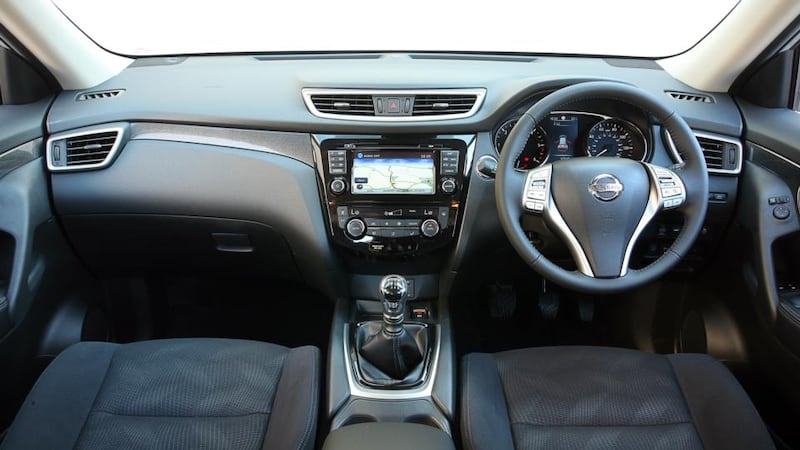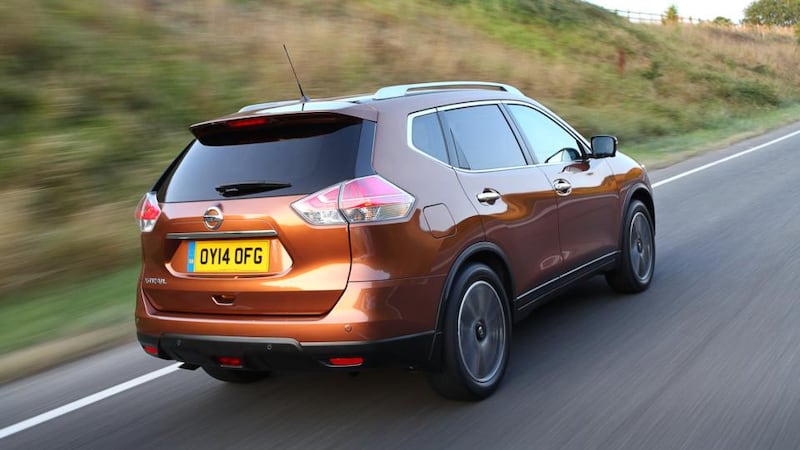If the old Nissan X-Trail was something of an underrated, under-appreciated vehicle (and yes, that's my hand up to indicate that I think it was) then it was entirely Nissan's fault. How so? Simply this . . .
When the second generation X-Trail was launched, it was traditional SUV – chunky, squared-off styling, a feeling of Tonka-Toy ruggedness inside and out, and such niceties as a boot floor that flipped over from heavy-duty carpet on one side to hose-down rubber on the other. It was, in other words, a car designed for hard work as much as high class.
The trouble was that this was 2007, the very same year that Nissan also launched a little- known, small selling model called the Qashqai. Suddenly, the buying public decided that this was what they wanted; a car with the styling and butch ambitions of a 4x4 but the soothingly simple underpinnings (and running costs) of a family hatchback.


Sadly, that left the military- spec X-Trail rather out in the cold. A shame that, as it was a surprisingly good car to drive (better handling than a contemporary Land Rover Freelander for instance) and I really rather liked it.
With all that in mind, Nissan has boxed rather clever this time around. The new X-Trail is far more closely related to the all-conquering Qashqai, both stylistically and mechanically, and the Nissan brains trust has been even more clever in the way it has aligned the two model ranges.
In fact, you could almost describe the new X-Trail as a plus-sized Qashqai, and that’s probably what it would have been called had the X-Trail name not still resonated with customers.
You will note that Nissan’s product planners have smartly decided that this time around there will be no Qashqai +2 sitting between the regular Qashqai and X-Trail ranges. If you want a Qashqai with seven seats and/or a bigger boot, then this time around it’s going to have an X in the badge.
Certainly, from the outside, you could very easily mistake the new X-Trail for a Qashqai at the front. Gone are the set- square-and-ruler lines of the old model to be replaced with something that looks a lot slicker, but possibly just a touch too generic. Around the back the differences are clearer – the X-Trail is clearly bigger and bulkier than its smaller crossover brother.
Inside, the cabin is virtually identical to that of the Qashqai. Same dials, same central touch screen, same über-comfy front seats. You sit a bit higher and more upright, true enough but the overall sensation is much the same. It’s not what you’d call an excitingly-styled cabin but in terms of quality, ergonomics and space, it plays a strong hand.
Space in the middle row of seats is especially impressive. Kids have acres of room and even tall adults find fresh air into which to extend their limbs. There’s even reasonable space in the boot seats. True, it’s a kid-zone only back there, but at least (unlike the old Qashqai +2) you don’t have to start thinking about sawing off legs or feet to get them to squeeze in.
On basic X-Trail models, the seats are left out altogether resulting in a massive boot, but even with the seats boot volume is an impressive 550 litres. It would be more impressive if the intrusive cargo cover didn’t make loading bigger items so awkward.
While the old X-Trail used a 2.0-litre diesel engine, this one makes do with a 1.6. That sounds, off the bat, as if it might be too small, but the figures are impressive – 130hp and 320Nm of torque aren’t bad at all and the all-important CO2 and fuel consumption figures are a healthy 129g/km and 4.9 litres per 100km (around 57mpg).
Sadly though, you can feel the lack of displacement – the X-Trail never feels sluggish but it does occasionally feel breathless, especially trying to pick up motorway pace in a high gear. It’s bearable, but a 2.0-litre engine would still seem to be the better option for a car this size.
It does drive well though, with the caveat that it can’t match the silky-smooth dynamic performance of the smaller Qashqai. The X-Trail leans more in corners, is slower to react to the steering and occasionally clunks in an old-fashioned 4x4 manner over bumps. In fact, to drive it feels surprisingly old-school – chunky rather than silky. It’s clearly something that’s engineered in, so Nissan has obviously decided that X-Trail customers still want their car to feel a little more beefy. I rather like that.
In fact, I rather like the whole X-Trail. It's not as immediately class-leading as the Qashqai, but it puts in a very solid performance when considered as a rival to the likes of the Toyota RAV4, Hyundai Santa Fe and Jeep Cherokee. It's not an exceptional nor exceptionally exciting car, but one that works its way gently into your affections – a classic workhorse. Somehow I suspect this one won't end its life stamped as underrated. The Lowdown: Nissan X-Trail 1.6d SVE 7 Seats
Price: circa €37,700 as tested. (X-Trail pricing starts from €29,950)
Power: 130hp
Torque: 320Nm
0-100kmh: 10.5sec
Top speed: 180kmh
Claimed economy: 4.9l/100km (57mpg)
CO2 emissions: 129g/km.
Motor tax: €280









